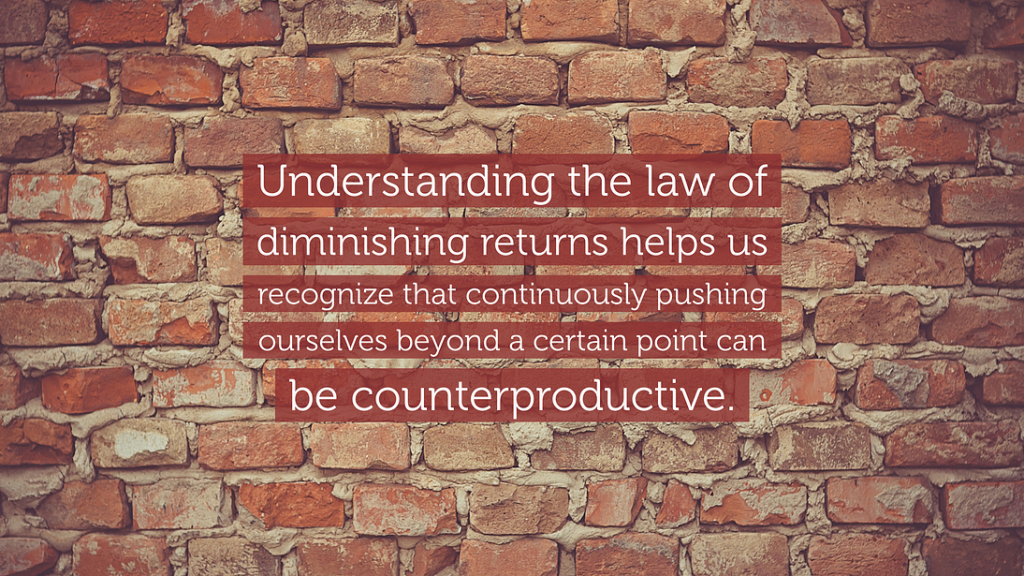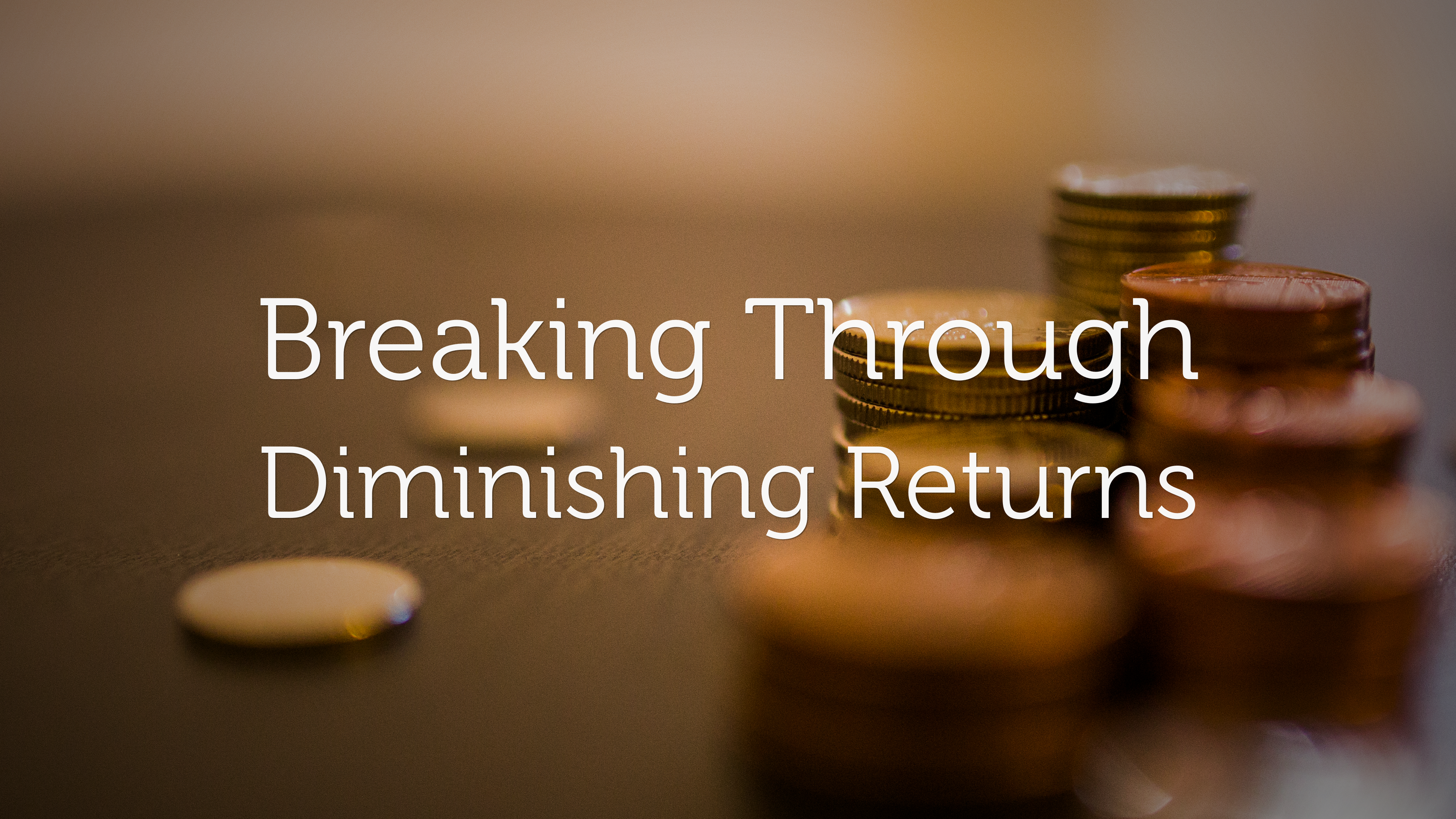Why More Effort Doesn’t Always Mean More Results
Ever feel like you’re working harder but not seeing the same level of progress? That’s the Law of Diminishing Returns at play. Initially, increasing effort leads to big gains, but at a certain point, extra input yields smaller benefits—or worse, negative results.
This principle, originally from economics, applies directly to productivity and peak performance. Recognizing it can help you optimize effort, avoid burnout, and work smarter.
How the Law of Diminishing Returns Impacts Performance
Imagine you’re studying for an exam. The first few hours are highly productive, but as fatigue sets in, each additional hour brings less improvement. Eventually, exhaustion kicks in, and further studying does more harm than good. The same applies to work, fitness, and personal growth.
Signs You’ve Reached the Point of Diminishing Returns:
✔ Mental Fatigue – Struggling to focus or think clearly.
✔ Decreasing Efficiency – Tasks take longer than usual.
✔ Plateaued Performance – Extra effort isn’t yielding results.
✔ Declining Motivation – Work that once felt exciting now feels draining.
If you recognize these signs, it’s time to adjust your approach.
How to Find the Right Balance for Peak Performance
Instead of pushing endlessly, optimize your effort. Here’s how:
1. Prioritize High-Impact Tasks
Not all tasks are equal. Identify the 20% of activities that produce 80% of your results (Pareto Principle). Focus your energy there.
Example: If you’re a writer, instead of spending hours perfecting every sentence, prioritize crafting compelling ideas and structuring content effectively.
2. Set Limits and Take Strategic Breaks
Rest isn’t a luxury—it’s a productivity multiplier. Studies show that breaks improve focus and creativity.
Try the Pomodoro Technique (25-minute work sprints followed by 5-minute breaks) or take longer breaks after deep work sessions.
3. Work Smarter, Not Harder
Instead of increasing effort, improve efficiency:
- Automate repetitive tasks (use scheduling tools, templates).
- Delegate work that doesn’t require your expertise.
- Batch similar tasks to minimize context switching.
Example: If emails drain your time, handle them in two focused sessions per day instead of reacting all day.
4. Optimize Learning and Growth
Mindless repetition doesn’t guarantee improvement. Instead, practice deliberately—focus on refining weak areas and challenging yourself.
Example: An athlete trying to improve speed shouldn’t just run more miles but analyze technique, tweak training intensity, and prioritize recovery.
5. Listen to Your Energy Levels
Your energy, not time, dictates performance. Align demanding work with your peak productivity hours.
Example: If you’re most creative in the morning, schedule deep work early and save admin tasks for later.
6. Know When to Stop
Success isn’t about working the most—it’s about working effectively. If extra effort is leading to stress or mistakes, step back, reassess, and refine your approach.
Example: If long work hours leave you exhausted and unproductive the next day, cutting back might actually help you perform better.

Final Thoughts: Work Smarter, Sustain Excellence
The Law of Diminishing Returns teaches us that more isn’t always better. The key to sustained peak performance is balance—knowing when to push, when to pause, and how to maximize impact without burning out.
Take action now: Identify areas where extra effort isn’t paying off and adjust your strategy. Small tweaks can lead to big breakthroughs in productivity and success.
